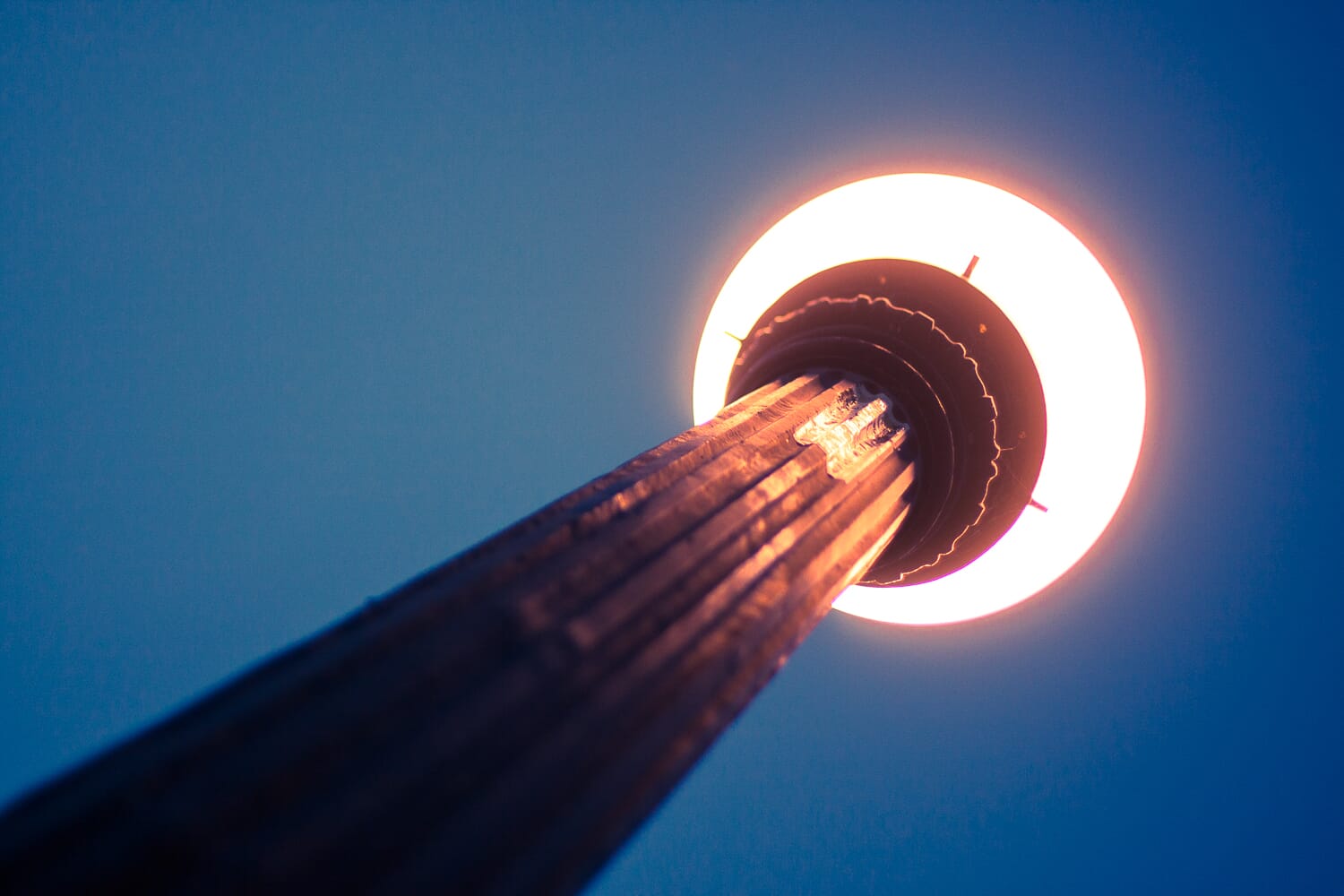Program Mode: Key Takeaways
- Program mode lets you control the ISO, while your camera controls the shutter speed and aperture
- ISO amplifies brightness and decreases image quality
- You can adjust exposure using your camera’s exposure compensation dial
- Program mode is perfect for photographers not quite comfortable with Aperture Priority, Shutter Priority, or Manual mode
If you’re struggling to understand your camera’s Program mode, you’ve come to the right place.
Because while it can be confusing to navigate different camera modes when you’re just starting out, it’s worth it in the end.
In fact, Program mode is the absolute best way for beginners to start to take control over different camera features.
And you can use it for gorgeous, professional-quality images.
Let’s get started.
Program Mode in Photography:
What Is Program Mode?
First things first:
All basic camera modes give you different ways of controlling three settings (exposure triangle):
- Aperture.
- Shutter speed.
- And ISO.
These three settings work together to determine the overall brightness (i.e., exposure) of your photos.
So depending on your combination of aperture, shutter speed, and ISO, you might end up with a photo like this:

Or a photo that’s too dark (i.e., underexposed):

Or a photo that’s too bright (i.e., overexposed):

The goal is generally to get a photo that’s just right, one with lots of detail, like in the first example above.
(The exception is when you decide to create a very dark or very bright image for creative reasons, but that’s an advanced technique.)
Now, aperture, shutter speed, and ISO can seem a bit complex.
And that’s one of the great things about Program mode:
You don’t actually have to know what aperture or shutter speed actually do.
Instead, Program mode allows you to choose your camera’s ISO setting–and then your camera will automatically choose the aperture and shutter speed.
Nice, right?

But as you can see, you do have to understand ISO to work with Program mode.
Which is the subject of the next section:
The Fundamentals of Program Mode: ISO
Program mode lets you choose your camera’s ISO.
But…
What actually is ISO? And how does it affect your photos?
ISO is basically a brightness amplifier for your photos.
It’s written in round numbers, like this:
ISO 100, ISO 200, ISO 400, ISO 800, etc.
Most cameras have a minimum ISO of 100. The maximum ISO varies a lot, with older cameras peaking around ISO 12800, and newer cameras going to ISO 51200 and beyond.
Now, the higher your ISO, the more your photos will be brightened in-camera.
So an ISO 100 photo might turn out like this:

But if you boost the ISO to ISO 400, you’ll end up with a much brighter shot instead:

Make sense?
In other words, ISO is an easy way to control the brightness of your photos. Keep the ISO low, and you’ll have a darker photo (all else being equal). Boost the ISO, and you’ll have a brighter photo (again, all else being equal).
But remember how Program mode works?
It lets you choose the ISO, then it automatically chooses the aperture and shutter speed.
I’m not going to get into the specifics of aperture and shutter speed. However, there’s one thing you do need to know:
Aperture and shutter speed also influence the brightness of your photo.
In fact, these three settings work together to determine your photo’s overall exposure, which means that a change of one setting can be counteracted by a change in another setting, and vice versa.
So it’s true that a higher ISO will increase the brightness of your photos, all else being equal.
But your camera reads the scene and decides how bright the shot should be in advance. Which means that, if you change the ISO when using Program mode…
…your camera will compensate by changing the aperture and shutter speed in the other direction.
In other words, boosting your ISO won’t change the exposure–when you’re using Program mode. It’ll simply force your camera to change the aperture and shutter speed, in an effort to maintain the same exposure.
I know it’s confusing. So let me give you a quick recap:
- ISO changes the brightness of your photo, assuming that the shutter speed and aperture remain the same
- Program mode allows you to adjust the ISO, but your camera will then adjust the shutter speed and aperture to compensate
- So changing the ISO doesn’t actually change the brightness of your photo, if your camera is set to Program mode
Now that you understand all this, you’re probably wondering:
If the ISO doesn’t change the exposure in Program mode, then what does it do? What’s the practical difference between choosing an ISO and just letting your camera pick the ISO, as it does in full Auto mode?
And I’ll tell you.
The ISO changes one very big thing:
Image quality.
Lower ISOs Give Better Quality Photos
Simply stated:
The lower your ISO, the better your photos will turn out.

This is because of something called noise (sometimes referred to as grain). It looks like speckles of sand on your photos.
And as you boost your ISO, your shots will become noisier and noisier, until you can hardly see any details at all.
Do you see what I mean?
More noise is just bad.
But here’s the thing:
When you use Auto mode, you don’t have control over your ISO. You camera might choose a low ISO that gives nice-looking, noise free images.
But it might also choose a high ISO that results in noisy, unpleasant photos.
That’s why Program mode is so valuable. You don’t have think about shutter speed or aperture, but you can improve your photos by choosing a low, noise-limiting ISO.
Program Mode and Exposure Compensation
I’ve talked a lot about how changing the ISO won’t actually change your overall brightness/exposure in Program mode. And this is true: Your camera compensates for changes in ISO by adjusting the shutter sped and aperture.
In fact, this is often a good thing. Because your camera does a decent job of reading the scene and determining the best possible brightness level for a beautiful image.
But sometimes…
Sometimes your camera gets it wrong.
Sometimes your camera gives you a photo that’s too dark:

Or a photo that’s way too bright:

And in cases like that, if you were shooting in Auto mode, you’d just be stuck. There’s nothing that could be done.
But if you shoot in Program mode, you can use something called exposure compensation to lighten or darken the exposure, in-camera.
- First, you find your camera’s exposure compensation feature. It’s sometimes activated via a dedicated button; other times, you’ll need to look in your camera’s menu options.
- Then, by setting the exposure compensation to a positive number (e.g., +1 or +2), you’ll brighten the photo.
- And by setting the exposure compensation to a negative number (e.g., -1 or -3), you’ll darken the photo.
It’s very simple, but can be a real life-saver in situations where you keep getting overexposed or underexposed shots!
How to Use Program Mode for Beautiful Images
Now that you understand all the Program mode basics, let’s take a look at how you can use it for gorgeous shots.

- First, set your camera to Program mode; you can generally do this via a dial on top of your camera.
- Then drop the ISO down to ISO 100.
- Take a photo, and review it on your LCD. How does it look?
- If it’s too dark, dial in +1 exposure compensation.
- If it’s too bright, dial in -1 exposure compensation.
Got it?
Take another test shot. If things are looking too dark, boost the exposure compensation to +2; if things are looking too light, drop the exposure compensation to -2.
And keep doing this until you end up with a well-exposed image!
One thing to bear in mind:
Your exposure settings will need to change whenever the light changes. So if you’re shooting indoors and go outside, or if you’re shooting in sun and then move to shade, you’ll want to repeat this process. That way, you’ll always get well-exposed images, no matter the situation.
By the way, if you really want to ensure the best possible images, you should add another step into your workflow:
Once you’ve determined the proper exposure, check your test image to see how sharp it is.
If it’s looking nice and crisp, all is well.

But if it’s looking blurry, boost your ISO until things become sharp.
The details aren’t important; just know that your camera is compensating for the raised ISO by altering the aperture and shutter speed to increase sharpness.
In other words, if you increase the ISO, you’ll end up with a sharper image–but a noisier one.
It can be a worthwhile tradeoff–but only increase the ISO if you absolutely need it!

When Should You Use Program Mode?
Program mode is a great option if you’re just becoming familiar with your camera settings, but you don’t want to dive into the deep end (with Aperture Priority, Shutter Priority, and Manual mode).
So I certainly recommend you try Program mode if you’re looking to capture higher-quality photos, but you don’t know where to start.

Program mode can also be useful in professional settings. It’s a way to get well-exposed images if you don’t particularly care about aperture or shutter speed in the situation, or if you have lots and lots of light (because when the light is strong, your camera will choose a shutter speed and aperture that pretty much guarantees sharp images).
That said, Program mode does have its limitations. You can’t adjust the aperture and shutter speed in any careful manner. In some situations, this won’t be a big deal–but there will be times when you want to choose a particular aperture or shutter speed, and in those situations, don’t use Program mode.
Instead, once you’ve familiarized yourself with Program mode, learn how to use Aperture Priority, Shutter Speed, and Manual mode.
That way, you’ll always get the highest-quality photos possible.

Program Mode in Photography: The Next Step
Now that you’ve finished this article, you know all about Program mode:
What it is.
What it’s all about.
And, most importantly, how you should use it for gorgeous photos.
So the next time you turn on your camera, think about your different possibilities.
And consider whether Program mode might be a good option.
It might take a bit of practice…
…but, pretty soon, you’ll be a Program mode expert!
What is Program mode?
Program mode is a basic camera mode that allows you to control your camera’s ISO (while your camera selects the aperture and shutter speed). For this reason, Program mode is sometimes referred to as ‘ISO Priority mode.’
Does Program mode allow you to use exposure compensation?
Generally, yes! You’ll want to check the specifics of your camera model, but you can often use exposure compensation when your camera is set to Program mode.
Who should use Program mode?
Program mode is great for beginners looking to familiarize themselves with basic camera settings and who want to start taking control of their camera as soon as possible. It’s also useful for situations where the shutter speed and aperture aren’t especially important, or you have lots of light to work with.
Does Program mode let you select the ISO?
Yes! Program mode lets you select the ISO, while your camera selects the aperture and shutter speed.
